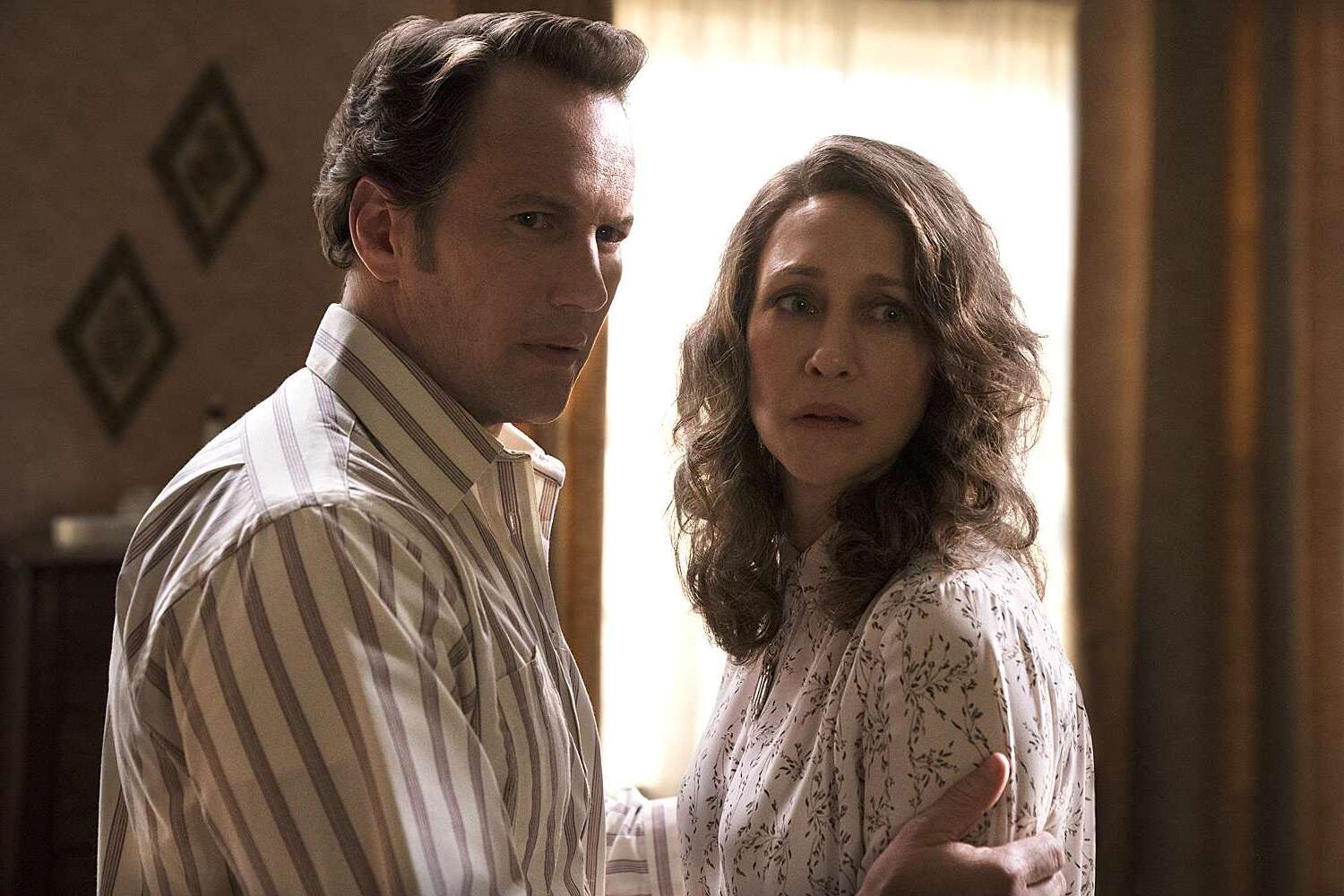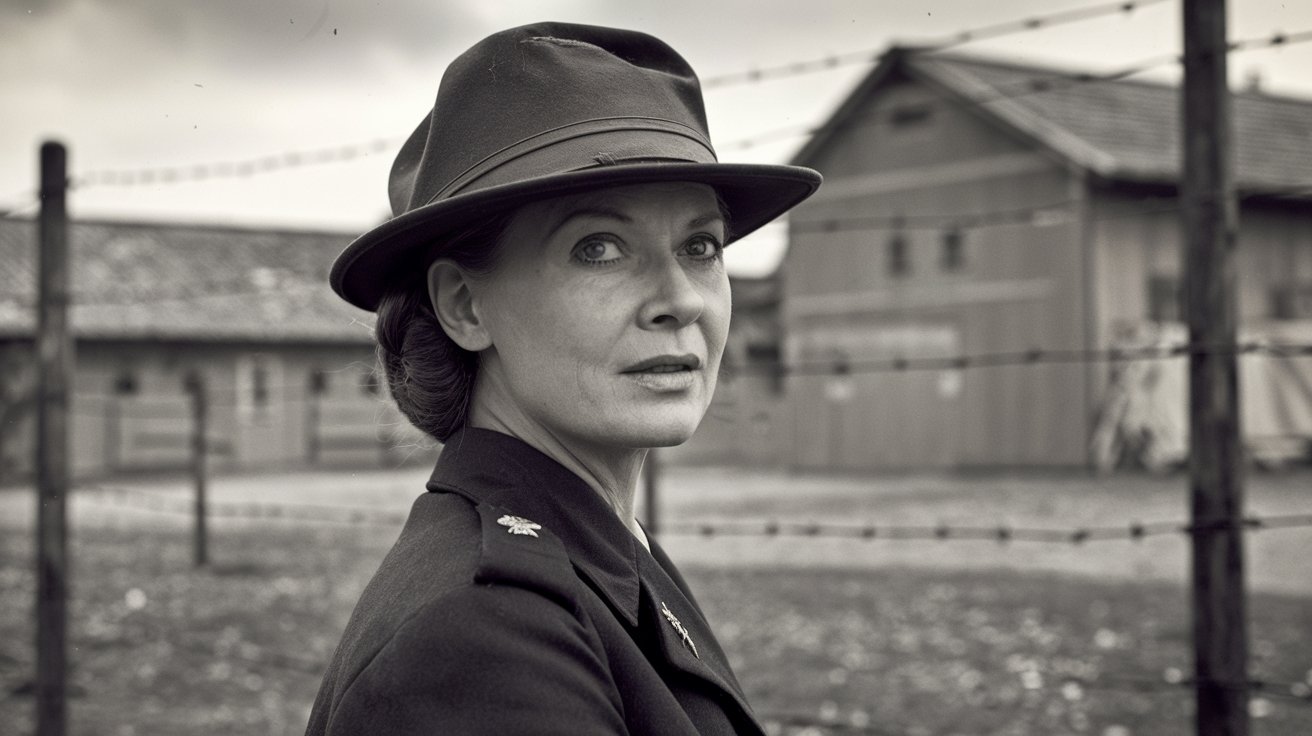
Ever wondered what makes The Conjuring 3: The Devil Made Me Do It so spine-chilling? This third installment in The Conjuring franchise dives into the real-life 1981 trial of Arne Cheyenne Johnson, who claimed demonic possession as his defense for murder. The film brings back paranormal investigators Ed and Lorraine Warren, portrayed by Patrick Wilson and Vera Farmiga, as they unravel the eerie events surrounding the case. From the first recorded murder in Brookfield, Connecticut, to the controversial use of demonic possession in court, this movie blends fact with fiction to keep you on the edge of your seat. Ready to uncover the chilling truths behind this supernatural thriller?
Key Takeaways:
- The Conjuring 3, based on a real-life trial, explores demonic possession as a defense for murder. The film adds fictional elements to create a compelling horror thriller.
- Ed and Lorraine Warren's involvement in the real-life case adds authenticity to the film, which delves into the cultural phenomenon of Satanic Panic in the early 1980s.
The Conjuring 3: A Real-Life Horror Story
The Conjuring franchise has always intrigued audiences with its mix of horror and supernatural elements. The third installment, The Conjuring: The Devil Made Me Do It, is no different. This film dives into the infamous 1981 trial of Arne Cheyenne Johnson, who claimed demonic possession as a defense for murder. Let's explore some fascinating facts about the movie, its inspiration, and the real-life events that shaped it.
-
Inspiration from True Events
The Conjuring series is known for its roots in real-life paranormal investigations. The Conjuring: The Devil Made Me Do It draws inspiration from the true story of Arne Cheyenne Johnson and his claim of demonic possession. -
The Case of Arne Cheyenne Johnson
In 1981, 19-year-old Arne Cheyenne Johnson was charged with the murder of his landlord, Alan Bono. Johnson's defense team attempted to use the novel claim that he was possessed by demons at the time of the murder. -
First Recorded Murder in Brookfield, Connecticut
The murder of Alan Bono marked the first recorded murder in the history of Brookfield, Connecticut, a small town with a previously peaceful record. -
Demonic Possession as a Defense
Johnson's defense team argued that he was not responsible for the murder because he was possessed by demons. This was a groundbreaking and unprecedented defense in American legal history.
The Warrens' Involvement
Ed and Lorraine Warren, famous paranormal investigators, played a significant role in the real-life case and the film. Their involvement added a layer of authenticity and intrigue to the story.
-
Ed and Lorraine Warren's Involvement
The film features paranormal investigators Ed and Lorraine Warren, who were involved in the investigation of the case. The Warrens were known for their work in demonology and their claims of combating supernatural entities. -
The Warrens' Investigation
Ed and Lorraine Warren investigated the Glatzel family, where David Glatzel claimed to be possessed by 42 demons. This investigation led them to believe that the demonic presence was real and was connected to the murder of Alan Bono. -
David Glatzel's Claims
David Glatzel, Debbie Glatzel's younger brother, reported experiencing strange occurrences and claimed to be possessed by demons. His claims included visions of a creature with big black eyes, a thin face, animal features, jagged teeth, pointed ears, horns, and hoofs.
The Trial and Its Aftermath
The trial of Arne Cheyenne Johnson was a media sensation, drawing attention to the unusual defense and the involvement of the Warrens. The aftermath of the trial continued to captivate the public.
-
The Trial
The trial of Arne Cheyenne Johnson began on October 28, 1981. Johnson's defense team argued that he was not responsible for the murder due to demonic possession, but the judge denied this defense, forcing Johnson to plead not guilty by reason of self-defense. -
Guilty Verdict
On November 24, 1981, the jury found Johnson guilty of first-degree manslaughter. He was sentenced to 10-20 years in prison but served only five years due to good behavior. -
Post-Trial Developments
After the trial, the case gained significant media attention, leading to two books and a TV show episode. The case also inspired the upcoming film The Conjuring: The Devil Made Me Do It.
Books and Media Coverage
The case of Arne Cheyenne Johnson and the Warrens' involvement has been documented in various books and media, further cementing its place in popular culture.
-
Books and Media Coverage
The case was documented in two books: The Demon Murder Case by Ray Garton and The Devil in Connecticut by Arne Cheyenne Johnson. The case also inspired a TV show episode and the film The Conjuring: The Devil Made Me Do It. -
Ed Warren's Health Issues
Ed Warren suffered multiple heart attacks in the 1980s, including one that left him wheelchair-bound for months. This is depicted in the film as a medical issue that shifts the narrative towards Lorraine’s work with police as a psychic. -
Lorraine Warren's Psychic Work
Lorraine Warren was involved in various paranormal investigations, including missing-person cases. In 1989, the Department of Justice issued a handbook on how to work with psychics and clairvoyants, highlighting her notoriety and fame in the field.
Creative Liberties in the Film
While the film is based on real events, the filmmakers took some creative liberties to enhance the story and make it more engaging for audiences.
-
Creative Liberties in the Film
While the film is based on real events, director Michael Chaves took creative liberties to enhance the story. These liberties include fictionalized elements such as suicide attempts and a fanatic occultist figure. -
The Film's Plot
The film follows Ed and Lorraine Warren as they investigate the case of Arne Cheyenne Johnson, who claims demonic possession after the murder of his landlord. The story involves an exorcism and a twisty quest for clues to understand the demonic presence. -
Ruairi O’Connor as Arne Cheyenne Johnson
Ruairi O’Connor plays the role of Arne Cheyenne Johnson in the film. His portrayal captures the complexity of Johnson’s character, who was both a defendant and a victim of alleged demonic possession.
Key Characters and Performances
The film features strong performances from its cast, bringing the real-life characters to life and adding depth to the story.
-
Julian Hilliard as David Glatzel
Julian Hilliard plays the role of David Glatzel, who claimed to be possessed by 42 demons. His character's experiences are central to the film's narrative, highlighting the supernatural elements of the case. -
Patrick Wilson and Vera Farmiga
Patrick Wilson and Vera Farmiga reprise their roles as Ed and Lorraine Warren in The Conjuring: The Devil Made Me Do It. Their performances bring depth to the characters, emphasizing their dedication to their work in demonology. -
Michael Chaves as Director
Michael Chaves directed The Conjuring: The Devil Made Me Do It. He grew up Catholic and found the case to be deeply unsettling, questioning his own faith in the process of making the film.
Historical Context and Cultural Impact
The film is set against the backdrop of the early 1980s, a time of growing paranoia about demonic possession and the Satanic Panic.
-
Historical Context
The film is set in the early 1980s, a time when the Satanic Panic was sweeping the country. This cultural context adds to the film's tension and fear, as the characters navigate a society increasingly paranoid about demonic possession. -
The Waterbed Scene
A scene in the film involves an evil waterbed and a traumatized child. While this is fictionalized, it taps into the real-life traumatic encounter David Glatzel experienced in his bedroom, where he reported an unexplained burn stain through his mattress and onto the floor below. -
Cursed Witch’s Totem
In the film, the Warrens discover a cursed witch’s totem buried underneath the floorboard. This element is fictional but adds to the supernatural atmosphere of the story. -
Real-Life Burn Stain
David Glatzel reported an unexplained burn stain through his mattress and onto the floor below. This real-life event is a key part of the film’s narrative, highlighting the traumatic experiences of the Glatzel family.
The Glatzel Family's Ordeal
The Glatzel family played a crucial role in the real-life events and the film, with their experiences forming the basis of the story.
-
Carvings in the Woods
The Glatzels found carvings in the surrounding woods that they interpreted as demonic or pagan in origin. These carvings add to the eerie atmosphere of the film, suggesting a deeper supernatural presence. -
The Dawn of Satanic Panic
The film taps into the dawn of the Satanic Panic in the early 1980s. This cultural phenomenon is reflected in the characters’ growing paranoia and fear of demonic possession. -
Ed Warren’s Heart Attack
Ed Warren had a heart attack during the investigation, which is depicted in the film. In reality, he suffered multiple heart attacks, including one that left him wheelchair-bound for months. -
Lorraine Warren’s Psychic Work with Police
Lorraine Warren helped police with various cases, including missing-person cases. Her work as a psychic was so notable that the Department of Justice issued a handbook on how to work with psychics and clairvoyants in 1989.
The Warrens' Legacy
Ed and Lorraine Warren's work in demonology and paranormal investigations has left a lasting impact on popular culture and the horror genre.
-
The Warrens’ Fame and Notoriety
Ed and Lorraine Warren became famous and notorious for their work in demonology. They spread their work through lecture tours, books, and TV appearances, documenting their accounts of haunted houses, demonic dolls, and possessed people. -
Arne Johnson’s Post-Trial Life
After serving five years in prison, Arne Johnson married his fiancée, Debbie Glatzel. He also earned his high school diploma behind bars. The case was so infamous that it led to a book titled The Devil in Connecticut, which was printed in 1983 and became very popular. -
Carl Glatzel’s Lawsuit
Carl Glatzel, David’s brother, sued Ed and Lorraine Warren for exploiting his family for monetary gain. This lawsuit highlights the controversy surrounding the Warrens’ methods and motivations. -
David Glatzel’s Illness
In 2007, Carl Glatzel confirmed that David had indeed suffered from an illness at the time of the alleged possession. This adds a layer of complexity to the case, suggesting that David’s experiences might have been influenced by his mental health.
The Conjuring Franchise's Impact
The Conjuring franchise has had a significant impact on the horror movie industry, paving the way for more supernatural and suspenseful films.
-
The Conjuring Franchise Impact
The Conjuring franchise has had a lasting impact on the horror movie industry. Its success paved the way for more supernatural and suspenseful films to captivate audiences. -
Sequels and Spin-Offs
The Conjuring franchise includes three direct sequels: The Conjuring 2, The Conjuring: The Devil Made Me Do It, and The Conjuring: The Devil Made Me Do It Part II. Additionally, there are spin-offs like Annabelle and The Nun, which expand the universe of the franchise. -
Future Films in The Conjuring Universe
More films in The Conjuring universe are in the works, continuing the legacy of Ed and Lorraine Warren’s paranormal investigations. This ensures that the franchise will remain a staple in the horror genre for years to come. -
The Conjuring: The Devil Made Me Do It as Entertainment
While the film is based on a true story, it is ultimately more about entertainment than truth. Director Michael Chaves took creative liberties to enhance the narrative, making it a compelling horror thriller that captures the essence of the real-life case while also adding fictional elements to keep audiences engaged.
Final Thoughts on The Conjuring 3
The Conjuring: The Devil Made Me Do It dives into the eerie world of demonic possession and paranormal investigations. This third installment, inspired by the real-life case of Arne Cheyenne Johnson, brings a mix of true events and creative storytelling. With Ed and Lorraine Warren at the helm, the film explores the chilling 1981 murder trial where Johnson claimed demonic possession as his defense. The movie captures the essence of the Warrens' work while adding fictional elements to keep viewers on the edge of their seats. From the Satanic Panic era to the mysterious burn stains and carvings, the film blends history with horror. Whether you're a fan of the franchise or new to the story, The Conjuring 3 offers a gripping narrative that continues to cement the legacy of Ed and Lorraine Warren in horror cinema.
Frequently Asked Questions
Was this page helpful?
Our commitment to delivering trustworthy and engaging content is at the heart of what we do. Each fact on our site is contributed by real users like you, bringing a wealth of diverse insights and information. To ensure the highest standards of accuracy and reliability, our dedicated editors meticulously review each submission. This process guarantees that the facts we share are not only fascinating but also credible. Trust in our commitment to quality and authenticity as you explore and learn with us.


